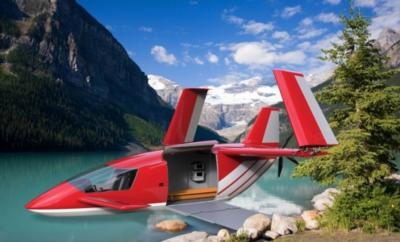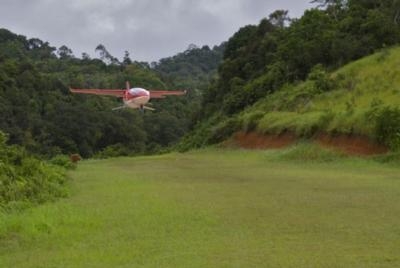Presented You Young Engineers For Innovative Thinking
One of the nominees for this year's James Dyson Award is an amphibious air ambulance with STOL capabilities its inventor says is designed to "land as close to the patient as possible."

The inventor is an industrial design student at Hochschule Pforzheim University in Germany. Wolfram Boehm designed the ALA DC 310 to be a light amphibious aircraft designed for ambulance flights in sparsely populated areas. While there are not many airfields present, the aircraft is capable of landing as close to the patient as possible.
"I had the idea to design an amphibious plane for ambulance usage while reading an article about a pilot of the Mission Aviation Fellowship, a Christian humanitarian organization," Boehm said. "The pilot described an incident where he was called to rescue a young mother in the jungle of Borneo. She had lost a lot of blood during childbirth. Unfortunately, the woman's village was about 15 Miles away from the next airfield. Therefore, she had to be transported on the nearest river for two days.
"As they arrived at the airfield where the pilot was waiting, the young woman had already died. This made me think about creating a plane that would be small enough to land as close as possible to the patient by being able to land in an open area or a near river, while also being reasonably cheap to run, fast, reliable and optimized for the usage."
According to information posted on the James Dyson Award website, the aircraft is designed land on any open area on land or on a water surface close to the destination. To make use of areas that have limited space for landings, the plane has good short takeoff and landing (STOL) abilities and the dimensions of the plane are kept as small as possible to fit into tight spaces.
Most amphibious planes utilize a boat hull to detach from the water while taking off. The ALA DC 310 uses hydrofoils that help to detach the aircraft actively from the water by generating a strong lift. This keeps the fuselage in an aerodynamic shape, which extends the range of the plane and also makes it a lot faster, which is an important point in rescue operations, according to the inventor.
If a shoreline is lined with trees or rocks, the wings of the aircraft fold back to avoid getting them stuck on an obstacle. The door is designed to float, and can be extended twice to make a bridge to shore.

The stretcher also consists of a floating foam shape, which can be separated into two individual stretchers to accomodate more than one patient. The top part can also be used as a scoop stretcher to pick up patients with injured vertebra.
The ALA DC 310 would be powered by a newly developed low displacement engine that can run on diesel and kerosene fuel. Boehm says the design "keeps fuel consumption and exhaust gas pollution low, makes the plane very economical to run, extends the planes' range and keeps the plane light. Also it is much easier to find diesel in a sparsely populated area, if you should run low on fuel."
The James Dyson Award challenges young engineers and scientists around the world to develop their problem solving ideas. The Award celebrates ingenuity, creativity and sustainable engineering. And, from raising $1 million in funding to setting up award-winning businesses, James Dyson Award winners often go on to achieve great things, the foundation says.
(Images provided by the James Dyson Foundation)
 ANN's Daily Aero-Term (04.20.24): Light Gun
ANN's Daily Aero-Term (04.20.24): Light Gun Aero-News: Quote of the Day (04.20.24)
Aero-News: Quote of the Day (04.20.24) ANN's Daily Aero-Linx (04.21.24)
ANN's Daily Aero-Linx (04.21.24) Aero-News: Quote of the Day (04.21.24)
Aero-News: Quote of the Day (04.21.24) ANN's Daily Aero-Term (04.21.24): Aircraft Conflict
ANN's Daily Aero-Term (04.21.24): Aircraft Conflict




